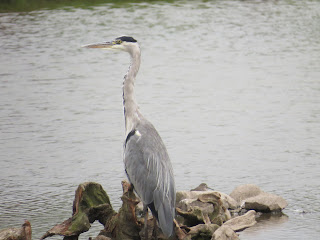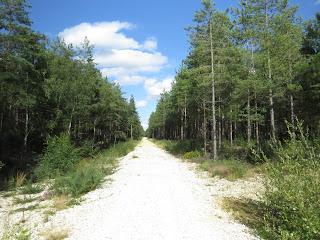My first stop was to RSPB Otmooor where on the advice of Jon Mercer, I took a path through a field next the the rifle range to look for redstarts. A length of red brick wall, stands in the open just before groups of bushes, and makes a good place to view from. In about an hour, I managed four sightings of a redstart ( probably the same one) as well as other warblers so I was happy with that, although disappointed that I could not capture any on camera due to the time it took me to locate the bird in the viewfinder once I had laid down the binoculars, as it had usually moved off by then!!
the wall which provided a good viewing screen
I returned home via Farmoor reservoir where there is a group of shags which have stopped off there. Someone kindly pointed out an individual quite close to the sailing club, which I could photograph; then I walked the 2.4 miles circuit of F2, seeing little grebes, great crested grebes, numerous coots, pied wagtails, egyptian geese, canada geese, greylag geese, cormorant,more shags, little egret, mallards, tufted duck, black headed gulls. The ruddy duck which has been seen regularly wasn't there, but may have moved to F! although I could not find it in my binoculars.
a peaceful scene at Farmoor reservoir
egyptian duck
shag























































